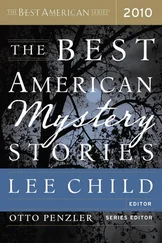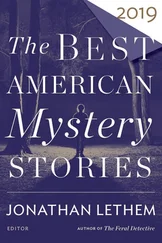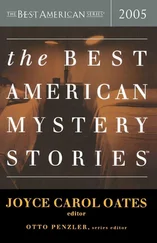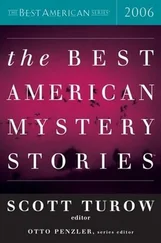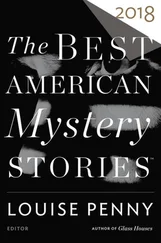Fortunately, my research had been summarized in an article for the Armchair Detective (“Dash-ing Through the Snow,” Winter 1989), so the material was readily to hand. The story that resulted is an amalgam of fact and fiction. The Hammett character is as true to life as I could make him, as is World War II Anchorage. The rest of it I made up.
I also did my best to be true to Hammett’s writing style and the ethos of his work. I am satisfied with the result, keeping in mind that he was Dashiell Hammett and I’m only me.
Brendan DuBoisis the award-winning author of short stories and novels. His short fiction has appeared in Playboy, Ellery Queen’s Mystery Magazine, Alfred Hitchcock’s Mystery Magazine, Mary Higgins Clark Mystery Magazine, and numerous other anthologies. He has twice received the Shamus Award from the Private Eye Writers of America for his short fiction and has been nominated three times for an Edgar Allan Poe Award by the Mystery Writers of America. This is his fourth appearance in the yearly Houghton Mifflin Best American Mystery Stories series edited by Otto Penzler; one of his short stories was also included in the Best American Mystery Stories of the Twentieth Century.
He’s also the author of the Lewis Cole mystery series — Dead Sand, Black Tide, Shattered Shell, and Killer Waves. His novel Resurrection Day, a suspense thriller that looked at what might have happened had the Cuban Missile Crisis of 1962 erupted into a nuclear war, received the Sidewise Award in 2000 for best alternative history novel, and it has been published in seven other countries.
His latest novel, a suspense thriller called Betrayed, was published this year in both the United States and Great Britain. He lives in Exeter, New Hampshire, with his wife, Mona, where he is at work on a new novel. Please visit his new Web site, www.brendandubois.com.
“Richard’s Children” originally appeared in an anthology edited by Anne Perry, Murder by Shakespeare. When I was invited to contribute a story to this anthology by Marty Greenburg, I knew that most — if not all — of the stories would take place during the time of William Shakespeare. Being a contrary sort, I decided that my story, while inspired and influenced by Shakespeare’s Richard III, would take place in contemporary times. One of the aspects of Richard III that fascinates me is the back story of influential families, murdering and betraying each other and their rivals for power. Another fascination of mine, of course, is American history, and it’s fun — and sometimes unsettling — to realize just how many royal families this democratic nation boasts, from the Kennedys to the Gores to the Bushes and beyond. These two fascinations of mine became the basis of “Richard’s Children,” and the fact that I was able to use Shakespeare’s work to write a modern story is once again proof — as if any more demonstration were needed — of the Bard’s enduring genius.
Elmore Leonard,described by the New York Times Book Review as “the greatest crime writer of our time, perhaps ever,” is the best-selling author of more than forty novels, including Tishomingo Blues, Pagan Babies, Get Shorty, Be Cool, Maximum Bob, Stick, Bandits, and Hombre. He has also written many short stories and screenplays and has been named a Grand Master by the Mystery Writers of America. He lives with his wife in Birmingham, Michigan.
I was watching a documentary on television about Russian mail-order brides, big, good-looking women, and wondered if I could use one of them in a book or story.
But wait a minute. Would I be able to make her talk? English, but with a hint of a Russian accent? I asked my researcher, Gregg Sutter, to get me some mail-order brides who weren’t Russian, and he came up with the Colombian girls in a stack of photos, all quite attractive and anxious to meet some nice gringos.
About the same time I happened to read about the astonishing number of Indian and Pakistani women who suffer severe accidental burns, their dupattas catching fire from the stove. They lose face, so to speak, and are discarded by their husbands, disfigured.
Could these story elements somehow be combined in a homicide situation?
Why not?
Robert McKeelives in Douglas, Wyoming, with his wife, Kathy, and their two children, Kent and Jessica. He works as a court reporter and reported the trial involving the murder of the gay University of Wyoming student Matthew Shepard.
He has received a Wyoming Arts Council Literary Fellowship, has twice won first place in the National Writers’ Association’s short fiction contest, and has three times won the annual fiction contest held by Wyoming Writers, Inc. His short stories have appeared in more than twenty literary and commercial publications.
When not in the courtroom or at his computer, writing, he is rummaging through antiques stores in search of vintage fountain pens or on the back roads of Wyoming riding his BMW motorcycle at what he admits are “excessive rates of speed.”
About his story “The Confession,” McKee says, “These days it seems that life is cheap. The body count in fiction and movies is staggering, and the characters never seem to give this mayhem a second’s thought. In this story, I attempted to create a character, who, while a young man, kills another man and then struggles with the guilt of that act for the rest of his life. Perhaps I thought a character capable of shame might provide the story with an unaccustomed twist.”
Joyce Carol Oatesis the author most recently of the novel The Tattooed Girl and the short story collection Small Avalanches. She has frequently written works of suspense and psychological horror, among them the novella Beasts and, under the pseudonym Rosamond Smith, The Barrens, Starr Bright Will Be With You Soon, Double Delight, and Snake Eyes. Her short stories have been nominated for Edgar Awards, and one of her stories is included in The Best American Mystery Stories of the Century. She is a member of the American Academy of Arts and Letters.
“The Skull” is one of those stories generated by an image. A man labors, rather like an artist, to recreate the facial features of a murder victim. He might tell himself, as an artist must tell himself, that he is the only living person who can achieve this particular goal. There is something magical in his mission, unless there is something obsessive, too. By degrees, the “personality” of the skull exerts its power over him, which is, of course, the irresistible power of the unconscious to seduce us, as we are all vulnerable to seduction by obsessions. In a longer version of the story, pragmatically edited out at Harper’s, the forensic scientist endangers his marriage in his pursuit of the skull’s identity. When he travels to the murder victim’s home, he learns who she “really” was — or does he? “The Skull” he pursues with such single-minded devotion is, in a sense, his own skull, his impending mortality.
George P. Pelecanosis an award-winning journalist, screenwriter, independent film producer, and the author of eleven highly regarded crime novels, the latest of which is Soul Circus. He is currently writing for the HBO television series The Wire and has recently completed his next novel, Hard Revolution, to be published in 2004. Esquire magazine called Pelecanos “the poet laureate of the D.C. crime world.”
“The Dead Their Eyes Implore Us” describes that time in our history when European immigrants flocked from their homelands to the American cities. Many were eased into the culture by seasoned relatives who had preceded them. Others found loneliness, prejudice, and confusion. My father’s family settled in D.C.’s Chinatown, which housed not only Chinese but poor immigrants of all backgrounds. These men and women typically worked as kitchen help, pushcart vendors, and day laborers. Like today’s immigrants, they did the kind of work that native-born Americans were no longer willing to do.
Читать дальше






